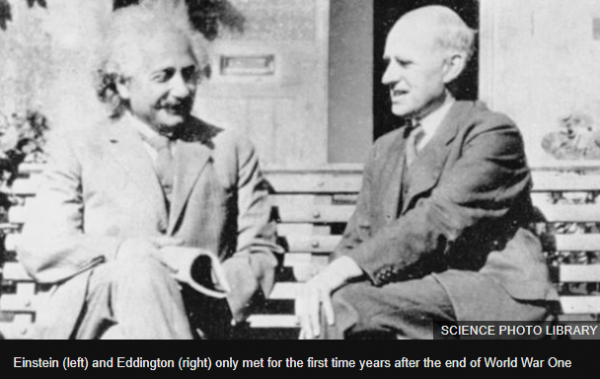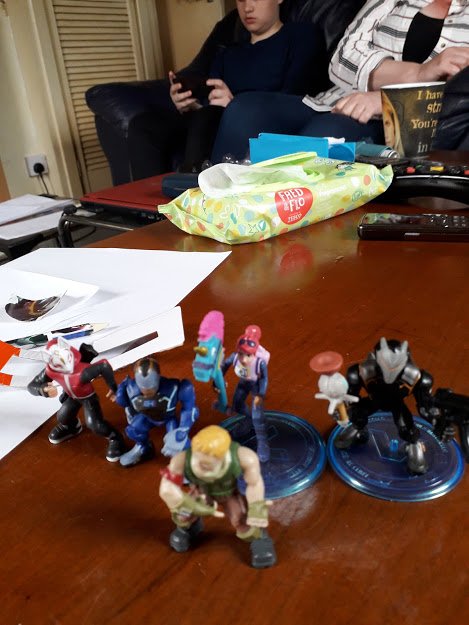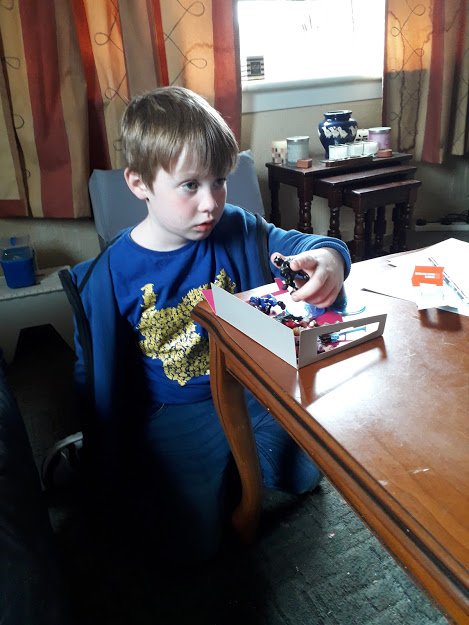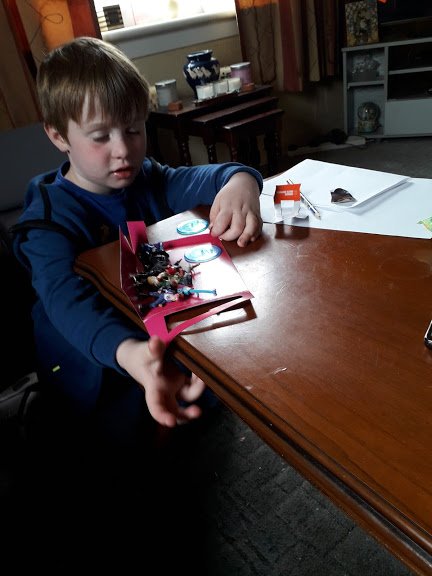-
Posts
20,842 -
Joined
-
Last visited
-
Days Won
49
Everything posted by CaaC (John)
-
Khufu ship: Five things you didn’t know about Egyptian Pharaoh’s vessel buried with him Tim Wyatt The discovery of the Khufu ship – an ancient Egyptian pharaoh’s barge buried inside his funeral pyramid – in 1954 is being celebrated by a Google Doodle today. It is 65 years to the day since archaeologists stumbled across the vessel inside the Great Pyramid of Giza. The wooden ship is 4,600 years old and was reportedly so well-designed it could still sail if launched back onto the Nile today. Although the exact purpose of the boat remains a mystery, historians believe it was placed inside the pyramid for the pharaoh Khufu, who is buried there. It is sometimes known as a “solar barge” because it is thought it was included inside Khufu’s burial chamber to allow him to sail across the heavens after death with the sun god Ra. It was discovered on 26 May 1954 by archaeologist Kamal el-Mallakh, when he dug under a stone wall on the south side of the Great Pyramid. He then unearthed a row of stone blocks covering a pit in the ground, which held a series of carefully piled cedarwood planks, ropes and other parts needed to reconstruct the ship. However, it was not known how ancient Egyptians had constructed their vessels, forcing restoration experts to learn from scratch about shipbuilding. Over a decade later, experts had managed to put together the 1,224 individual pieces into the 44-metre long boat. Support free-thinking journalism and subscribe to Independent Minds It can now be seen inside the specially-built Giza Solar Boat Museum, just outside the pyramid. A second dissembled ship was also discovered inside the pyramid and reconstruction began in 2011. Khufu, known to the Greek world as Cheops, was the second pharaoh of the Fourth Dynasty and ruled more than 2,500 years before Jesus was born. Apart from commissioning the Great Pyramid of Giza, little else is known about his reign. https://www.msn.com/en-gb/news/offbeat/khufu-ship-five-things-you-didnt-know-about-egyptian-pharaohs-vessel-buried-with-him/ar-AABVZnD
-
Real-life dragons: Pets that look like mythical creatures From 'Game of Thrones' to 'How to Train Your Dragon,' it is hard to not be enthralled by the idea of magical animals. However, this dream can actually be a reality. Well, sort of. Here is a list of 15 animals that look so mystical you won't believe are actually from planet Earth. Would you ever consider keeping any of these bizarre critters as a pet? 1/31 SLIDES
-
Copa America: Neymar stripped of Brazil captaincy and replaced by Dani Alves Neymar has been stripped of the Brazil captaincy for next month's Copa America and will be replaced by his Paris St-Germain team-mate Dani Alves. The 27-year-old forward, given the role eight months ago but under pressure after recent disciplinary issues, was informed by manager Tite on Saturday. Alves, 36, will also lead the side in friendlies against Qatar and Honduras. He has captained Brazil four times, most recently in a 1-0 win over Germany in March 2018. This month, French football authorities banned Neymar for three matches after he hit a fan following PSG's defeat by Rennes in the Coupe de France final. He was also reportedly involved in a dressing room incident with his PSG team-mates. The Copa America takes place in Brazil from 14 June to 7 July, with the hosts taking on Bolivia, Venezuela and Peru in Group A.
-

Manchester United Discussion
CaaC (John) replied to a topic in Premier League - English Football Forum
Already posted that 6 posts back Still, it's worth another post from a United point of view. -
Entire 18-acre Ancient Roman town discovered next to major motorway Isabel Dobinson & Ellis Stephenson & Laura Forsyth © KMG / SWNS.com The Roman settlement found in Newington, Kent. See SWNS copy NNroman: An 18-acre settlement containing rare coins, pottery and jewellery dating back as early as 43 AD has been uncovered next to a major motorway in Newington, Kent. The site close to the A2 includes remains of a temple which has since been named Watling Temple - making it one of only 150 sites recorded in England. Archaeologists also uncovered an ancient seven-metre road which is believed to have been an alternative route to the A2 which runs from London to Kentish coast. An entire Ancient Roman town including a temple and main road has been uncovered buried next to a major motorway. This discovery has been hailed one of the most significant finds in regional archaeological history. The 18-acre settlement, which contains rare coins, pottery and jewellery, dates back as early as 43 AD. It has been uncovered next to the A2 in Newington, Kent. The site includes remains of a temple which has since been named Watling Temple - making it one of only 150 sites recorded in England. Archaeologists also uncovered an ancient seven-metre road which is believed to have been an alternative route to the A2 which runs from London to Kentish coast. Experts have hailed the discovery as one of the most significant finds in the region - but the newly revealed settlement is destined to become new homes as part of a Persimmon Homes new development. Chairman of Newington History Group Dean Coles said: "This is very exciting. The scale of this site, with the huge number and quality of finds, changes our knowledge of Newington's development. "We already had evidence of a Roman burial ground and Roman occupation in the immediate vicinity and this excavation shows there was a thriving manufacturing site in the heart of our village. "The temple and major road are massive discoveries. It proves the A2 wasn't the only Roman road through the village. "As a group, we are keen to trace the route and destination of this new 'highway' which may have connected with another temple excavated 50 years ago on the outskirts of Newington and a villa unearthed in 1882." Experts will analyse the findings and publish a report but the ancient remains will once again be covered up to make way for the housing development. Archaeological director at Swale and Thames Archaeological Survey, Doctor Paul Wilkinson said: "This is one of the most important discoveries of a Roman small town in Kent for many years with the preservation of Roman buildings and artefacts exceptional." Archaeology project manager Peter Cichy added: "This is one of the most significant sites in Kent but it's only the beginning of months and months of work. "We will be analysing and dating our finds, sorting and piecing together thousands of pottery shards and writing up our report." Romans invaded Britain in 43 AD and remained for almost 400 years. Remains of their occupation have been found scattered across the UK - including Hadrian's Wall in Northumberland and the Roman Baths in Bath. https://www.msn.com/en-gb/news/offbeat/entire-18-acre-ancient-roman-town-discovered-next-to-major-motorway/ar-AABXk8C
-

Newcastle United Discussion
CaaC (John) replied to a topic in Premier League - English Football Forum
Your thoughts @Harvsky, good, bad or just media bullshit? they picked the story up from the Sun though... Newcastle United react to huge Middle East takeover claim - and offer no denial of £350million sale The Magpies have been for sale for two seasons but Mike Ashley is yet to find the right buyer for the club 23:19, 26 MAY 2019 UPDATED01:43, 27 MAY 2019 Newcastle United have issued a "no comment" response to talk that Mike Ashley is ready to sell the club to the cousin of Manchester City’s Arab owner Sheikh Mansou. A £350million sale to the Dubai-based billionaire Sheikh Khaled bin Zayed Al Nehayan has been claimed in a late night report in the Sun. United chiefs refused to expand on any details in the report but managing director Lee Charnley is well aware of the situation. And United's top brass - who are usually quick to knock down takeover stories - have not denied the claims despite being contacted by the Chronicle tonight. Newcastle United Dubai takeover link Newcastle United was the subject of a huge claim that they were about to be sold for £350million. Here's the latest on the claims There is a suggestion that the Premier League have been handed signed contracts by the takeover group but top-flight bosses are also yet to comment on the story. https://www.chroniclelive.co.uk/sport/football/football-news/newcastle-united-react-huge-middle-16335739 -
The man who made Einstein world-famous It is hard to imagine a time when Albert Einstein's name was not recognised around the world. But even after he finished his theory of relativity in 1915, he was nearly unknown outside Germany - until British astronomer, Arthur Stanley Eddington became involved. Einstein's ideas were trapped by the blockades of the Great War, and even more by the vicious nationalism that made "enemy" science unwelcome in the UK. But Einstein, a socialist, and Eddington, a Quaker, both believed that science should transcend the divisions of the war. It was their partnership that allowed relativity to leap the trenches and make Einstein one of the most famous people on the globe. Einstein and Eddington did not meet during the war or even send direct messages. Instead, a mutual friend in the neutral Netherlands decided to spread the new theory of relativity to Britain. Einstein was very, very lucky that it was Eddington, the Plumian Professor at Cambridge and officer of the Royal Astronomical Society, who received that letter. Not only did he understand the theory's complicated mathematics, as a pacifist he was one of the few British scientists willing to even think about German science. He dedicated himself to championing Einstein to both revolutionise the foundations of science and restore internationalism to scientists themselves. Einstein was the perfect symbol for this - a brilliant, peaceful German who refuted every wartime stereotype while challenging the deepest truths of Newton himself. Desperate fight to test Einstein's theory So, as Einstein was trapped in Berlin, starving behind the blockade and living under government surveillance for his political views, Eddington tried to convince a hostile English-speaking world that an enemy scientist was worthy of their attention. He wrote the first books on relativity, gave popular lectures on Einstein, and became one of the great science communicators of the 20th Century. His books stayed on the bestseller lists for decades, he was a constant presence on BBC radio and was eventually knighted for this work. It was hard to convince the UK to care about space-time and gravity as the U-boats were sinking food transports, and thousands of young lives were lost for meagre gains in Flanders, Belgium. Just Einstein's ideas were not enough. Relativity is strange, with twins ageing differently and planets trapped by warped space. Eddington needed a definitive demonstration that relativity was true and Einstein was right and that only his international approach could revolutionise science. His best option was to test a bizarre prediction of Einstein's theory of general relativity. When light passed near a massive body like the Sun, Einstein said, gravity would bend the rays ever so slightly. This meant the image of a distant star would be shifted a small amount - the star would seem to be in the wrong place. Einstein predicted a specific number for that shift (1.7 arc-seconds, or about 1/60 millimetre on a photograph). An astronomer would find this challenging to measure, but it could be done. Unfortunately, it is normally impossible to see stars during daytime, so one would have to wait until a total solar eclipse to make the observation. Total eclipses are rare, short, and often located in inconvenient places requiring extensive travel for European astronomers. Einstein had been trying for years to have this prediction tested, with no success. Eddington, though, thought he might be able to make it happen at an upcoming eclipse in May 1919, visible in the southern hemisphere. Even with the U-boat threat, no country was better positioned than Britain to undertake an expedition to test Einstein's prediction.
-

Manchester United Discussion
CaaC (John) replied to a topic in Premier League - English Football Forum
He must have given you double vision, you posted that twice -

Manchester United Discussion
CaaC (John) replied to a topic in Premier League - English Football Forum
-
Rare albino panda caught on camera in China: state media afp.com © HANDOUT The albino panda was photographed while trekking through the forest in southwestern Sichuan province A rare all-white panda has been caught on camera at a nature reserve in southwest China, showing albinism exists among wild pandas in the region, state media reported. The spotless, red-eyed animal was photographed while trekking through the forest mid-April in southwestern Sichuan province, said official news agency Xinhua on Saturday. The panda is an albino between one to two years old, said Li Sheng, a researcher specialising in bears at Peking University, who was quoted in Xinhua's report. https://www.msn.com/en-gb/news/offbeat/rare-albino-panda-caught-on-camera-in-china-state-media/ar-AABWebY
-
We don't get that many in our neck of the woods but if we did they would just be minor ones and more than likely you would not have known until you heard about it on the local news reports.
-
Jesus pal, I hope you and your family are ok?
-
Storm Hannah unearths 'sunken' forest from more than 4,500 years ago Laura Elvin & Danya Bazaraa © Getty Images BORTH, WALES - MAY 24: A general view of petrified ancient trees on May 24, 2019, in Borth, Wales. A prehistoric forest which was buried under water and sand more than 4,500 years ago has been uncovered on the beach between Ynys-las and Borth in mid-Wales. The forest has become associated with the myth of a sunken civilization, known as Cantrer Gwaelod, or the Sunken Hundred, and devotees believe the area was a once-fertile land and township stretching for 20 miles. The remains of the forest's trees, preserved in the local peat, have been exposed by low tides and high winds from the recent Storm Hannah. (Photo by Matthew Horwood/Getty Images) Storm Hannah is believed to have uncovered a 'drowned' forest from more than 4,500 years ago. The forest of Borth used to stretch for two to three miles along the shore between Ynys-las and Borth in Wales before it was buried under layers of peat, sand and saltwater. Now, after low tides and a storm, the prehistoric forest of hundreds of trees has been revealed on the beach.
-
I have started to get the wee man (Kaiden) some Fortnite Figures, 1 a week if he behaves and does well at school, 5 figures to his collection so far and he loves them.
-
A Birthday prezzie from our daughter, a Glasgow Rangers top, the wife said "You better not walk around outside with that on down Leith, this is Hibernian territory"
-
Congratulations, you will only have 40 years to go to catch up on me and Liz, we will be celebrating 45 years come this December.
-
The Loneliest Stars in the Galaxy Marina Koren We are made of star stuff, as Carl Sagan told us. The first stars ignited billions of years ago, out of the cold, primordial gas in the dark universe. The stars blazed until they exploded in bursts powerful enough to forge heavy chemical elements. The process repeated itself, over and over, all across space. The new elements found their way into other stars, and the planets, and, eventually, life. It’s a remarkable cosmic tale, with a recent twist. Some of the stardust has managed to become sentient, work out its own history, and use that knowledge to better understand the stars. Astronomers know stars so well, in fact, that they can tell when one doesn’t belong—when it’s migrated to our galaxy from a completely different one. Today astronomers study the chemical compositions of stars near and far, from our own sun to the most distant points of light. They do it with the help of spectroscopy, a technique that is much cooler than its clinical name suggests. Astronomers take starlight, absorbed and collected by telescopes, and break it down into its constituent lines, same as a prism of glass stretches light into the colours of the rainbow. These lines correspond to different elements, from the light kind, such as hydrogen and helium, to the heavy stuff, such as gold and platinum. Related slideshow: 30 photos to prove how beautiful our galaxy Milky Way is (Provided by Photo Service) 1-30 SLIDESHOWS Home to our own solar system, the Milky Way galaxy has captivated the imagination since the dawn of cosmology. Named after the dim ‘milky’ glow generated by the indistinguishable mass of stars that it’s made from when the Milky Way is observed from Earth, it appears like a band, due to its disc shape, but is actually a barred spiral galaxy. Facts and figures around the Milky Way’s size and constituents vary, with the galaxy’s diameter believed to be between 120,000 and 150,000 light-years. Within the Milky Way there could be as many as a trillion stars and 100 billion planets. With such incredible numbers, it’s easy to understand why until 1920 it was believed that the Milky Way contained all the stars in the universe, but we now know it to be just one of around 200 billion galaxies that we can observe. (Pictured) The Milky Way over Porth Loe, Cornwall, England. Some stars have a signature that’s entirely distinct from their neighbours’, and there are a few of them in our very own galaxy, including one identified recently by a group of scientists based in Japan and another by an international team. The chemical compositions of these stars, their ratios of one element to another—those markers make them unlike any other star in the Milky Way, which is home to some tens of billions. The stars in the Milky Way have similar chemical makeups because they emerged from the same clouds of gas, infused over time with a range of elements from the stellar explosions we call supernovae. “Stars are formed from gas, and whatever spilled into the gas prior to the formation ends up being in the star,” says Anna Frebel, an astronomer at MIT who has detected and studied one of these rogue stars. “It’s like genes that are being passed on.” The chemical signatures of the interlopers suggest that they originated in environments without too many stellar explosions. For astronomers, this is a clear indication that the stars flickered on somewhere else. How does this happen? The Milky Way, like many galaxies, is surrounded by other, smaller galaxies. “Just like the Earth has satellites, artificial and natural—man-made satellites and the moon—our galaxy also has satellites,” says Marion Dierickx, a postdoctoral fellow at the Harvard-Smithsonian Center for Astrophysics. “These occasionally fall in.” Related slideshow: Mind-blowing photos of the universe (Provided by Espresso) The Milky Way has little trouble absorbing these galaxies and their contents when gravitational forces draw them near. “Our galaxy was built up over time as smaller galaxies collided and merged with each other,” says Douglas Boubert, a junior research fellow at Magdalen College at Oxford. “The oldest stars we see flying around the Milky Way today were all born in precursor galaxies.” When galaxies merge, stars are jostled and settle into new orbits. So do planets and moons. The process is so slow, unfolding over millions of years, that any inhabitants of these planets if they could fathom such things, wouldn’t know about the cosmic merger until millions of years after it happened. “We always think things are static in the cosmos, but they really are not,” Frebel says. Astronomers have used spectroscopy to detect rogue stars in the satellite galaxies around our own. In 2011, they discovered that the composition of more than 5 per cent of the stars inside the Large Magellanic Cloud didn’t match that of its other stellar residents. Those rogues resembled stars in the Small Magellanic Cloud, a nearby galaxy, instead. At some point, the larger cloud had stolen them away. Astronomers say many more stars of this nature are in the Milky Way, but they are tricky to find. They orbit at the very edges of the galaxy; by the time their light reaches telescopes on Earth, it’s incredibly faint. “You can’t mount, at this point with our technology, a systematic campaign to identify these,” Dierickx says. “You find one candidate, you do thorough follow-up observations, and you come up with a detailed characterization—doing this kind of study for many stars would take a very long time.” Dierickx recommends looking at these stars as a reminder of the Milky Way’s place in the cosmos. Vast expanses of space separate our galaxy from everything else, but the distances are not as insurmountable as they seem. “That might be interesting, to the average layperson, to not think of our galaxy as living in splendid isolation in dark, empty space, but thinking of this richer picture with dozens of galaxies, satellites flying around in all directions and falling in every once in a while,” she says. “They really have contributed to building our Milky Way as we know it.” https://www.msn.com/en-gb/news/techandscience/the-loneliest-stars-in-the-galaxy/ar-AABO0EW?ocid=chromentp
- 1,657 replies
-
- space exploration
- astronomy
-
(and 1 more)
Tagged with:
-
The Korean War, The Cuban Missile Crisis, Vietnam, Afghanistan, Iraq and now Iran, a never-ending story buddy, I was born growing up with all these crisis and then served in the army on tours of duty so things like this I will take as another idiot like Trump pumping his gums trying to give people the impression that he is a big power broker but he will land on his face with an almighty thump sooner than later, just like Nixon.
-
SpaceX puts up 60 internet satellites The SpaceX company has begun the roll-out of its orbiting broadband system. A Falcon-9 rocket launched from Cape Canaveral in Florida late on Thursday, packed with 60 satellites capable of giving users on the ground high-speed connections to the internet. Entrepreneur Elon Musk's firm aims eventually to loft nearly 12,000 spacecraft for its "Starlink" network. SpaceX is one of several commercial outfits with permission to fly an internet mega-constellation. Others include the UK-based start-up OneWeb, which began its roll-out in February with six operational spacecraft. Online retailer Amazon also has ambitions in this market. It's working on a 3,200-satellite proposal known as Project Kuiper. All the concepts envisage flying spacecraft in a low-Earth orbit less than 2,000km above the planet. This will minimise the delay, or latency, in the internet connections. The Falcon lifted off from Space Launch Complex 40 (SLC-40) at Cape Canaveral Air Force Station at 22:30 local time (02:30 GMT, Friday). Deployment of the Starlink satellites was successfully completed just over an hour into the flight, SpaceX announced. What do we know about the internet project? SpaceX has kept secret much of the development activity on its multi-billion-dollar broadband plan. The company launched a couple of technology demonstrators, Tintin-A and Tintin-B, in February 2018, but the spacecraft that went up on Thursday look very different. Pictured by Mr Musk in a tweet earlier this month, these latest platforms appeared to have a "flat-pack" design. And in a briefing with reporters on 15 May, the CEO gave additional information. Each satellite weighs 227kg, has multiple high-throughput antennas and a single solar array. The platforms are also equipped with electric propulsion - a system that expels electrically charged atoms of Krypton to provide thrust. The engine is needed to lift a Starlink from its drop-off altitude of 440km to its operational height of 550km. The propulsion system will also act to maintain the satellite's correct position in the sky and to bring it down at the end of its service life. Mr Musk said the newly launched Starlinks were an iterative design and later platforms would have a higher specification, featuring, for example, inter-satellite links. It was "one of the hardest engineering projects I've ever seen done," he said and cautioned that much could go wrong in the early phases of the roll-out. Is there room up there for all these satellites? There is increasing unease about the number of satellites that could be launched in the next few years - for many purposes, not just broadband delivery - and how this might potentially clog up the space environment. To give context to what is about to happen - there are just 2,000 operational satellites in orbit today, according to the Union of Concerned Scientists' database. SpaceX's ambitions alone, if fully realised, would dwarf this population. The great fear is that congested orbital highways will result in collisions and the production of debris that then initiates further destructive encounters. SpaceX said it intended to be a responsible actor and had given its satellites the ability themselves to track orbital debris and to autonomously avoid it. What is more, it added, all the Starlinks were 95% constructed from components that would burn up rapidly on re-entry to the atmosphere when decommissioned - exceeding all current safety standards. It will be some time before SpaceX can actually offer connections to the internet. For that, it must launch many more than the 60 spacecraft on Thursday's Falcon. Six further rocket flights will have to take place before minor broadband coverage is achieved. A dozen launches are required for moderate coverage, says Mr Musk. He hopes ultimately that revenue from the telecommunications network can fund some of his other ideas: "We think this is a key stepping stone on the way towards establishing a self-sustaining city on Mars and a base on the Moon." https://www.bbc.co.uk/news/science-environment-48289204
- 1,657 replies
-
- space exploration
- astronomy
-
(and 1 more)
Tagged with:
-

Manchester City Discussion
CaaC (John) replied to a topic in Premier League - English Football Forum
Only ever won the Champions League Cup with Barca, failed at Barca and City ( City so far) maybe he now wants to try and win it with Juve?







.png.ce772e9dbd263595ca40d777794392af.png)
.thumb.png.d0c81e6e286c3814507d98de2692f86e.png)

.thumb.png.f76eb555d742d61cc5cb427bbdbe0c6e.png)
.thumb.png.f750c47fb6b8f2d3b2aec021a0b5dfd7.png)












.thumb.png.9a1ea82f4d85c01649c7301ccc336040.png)